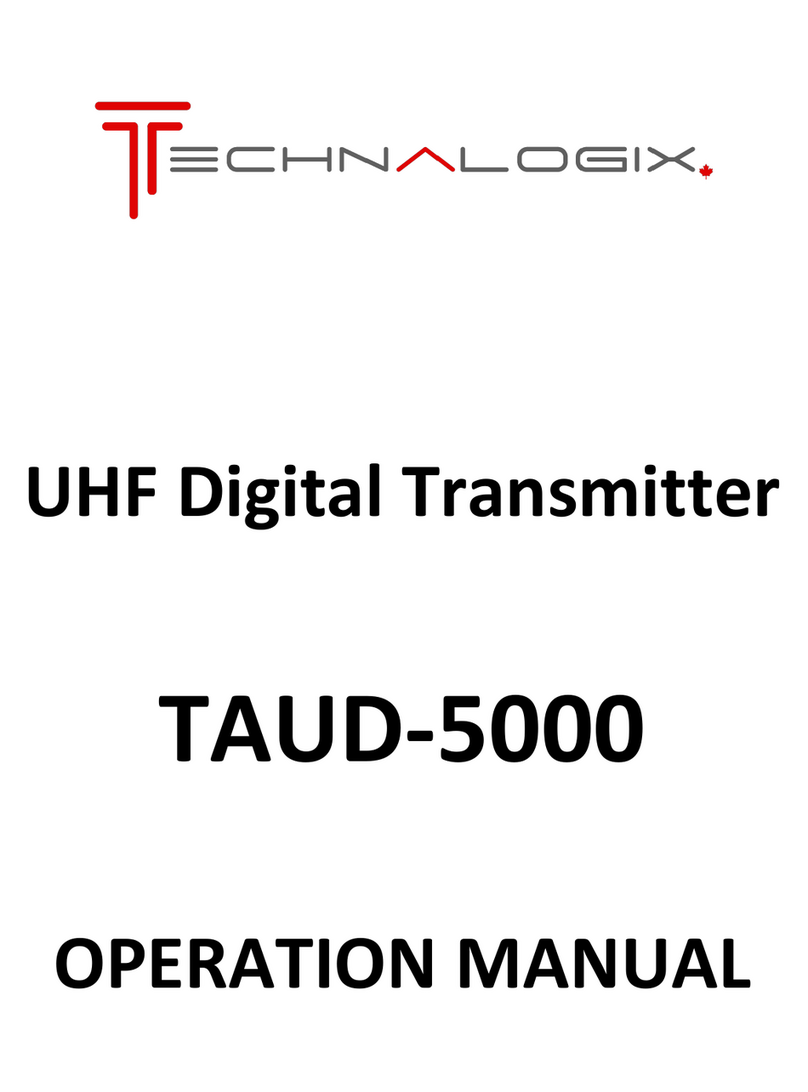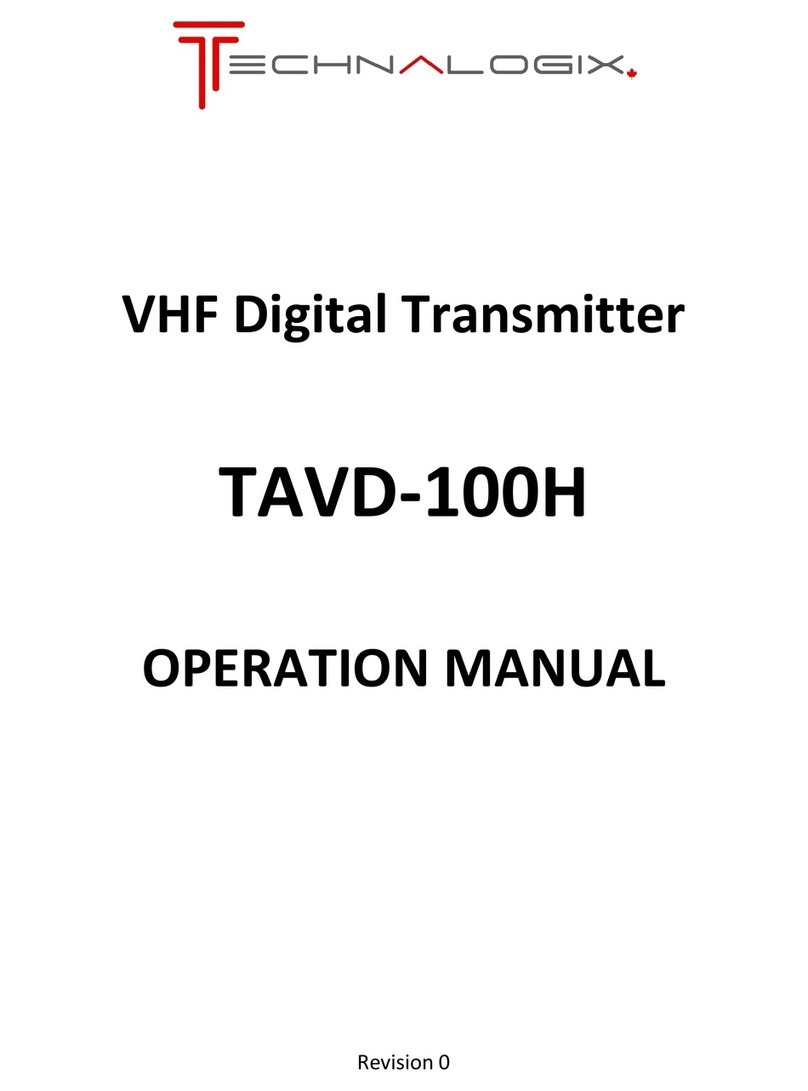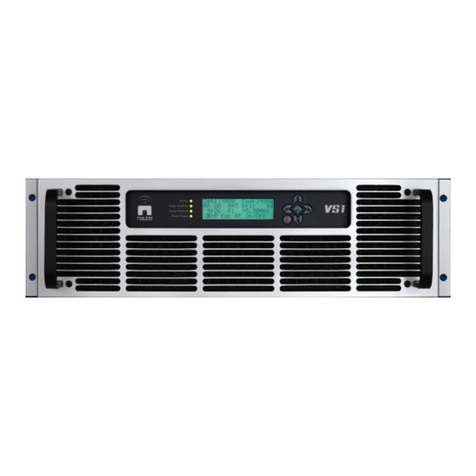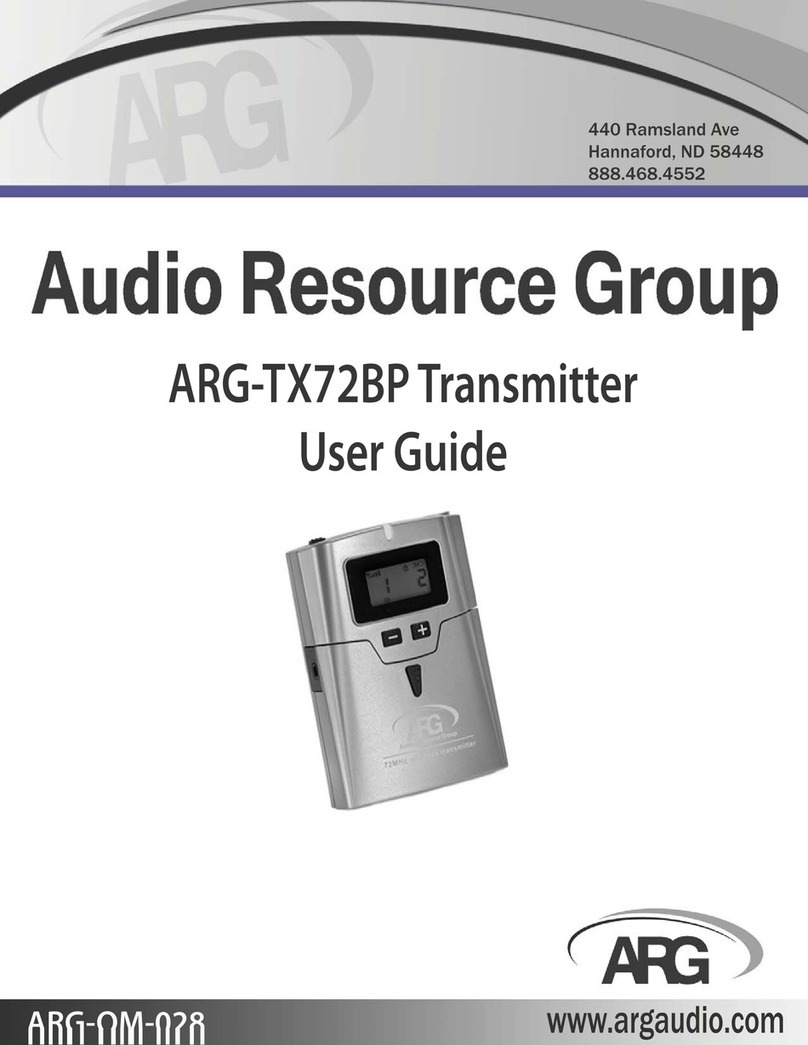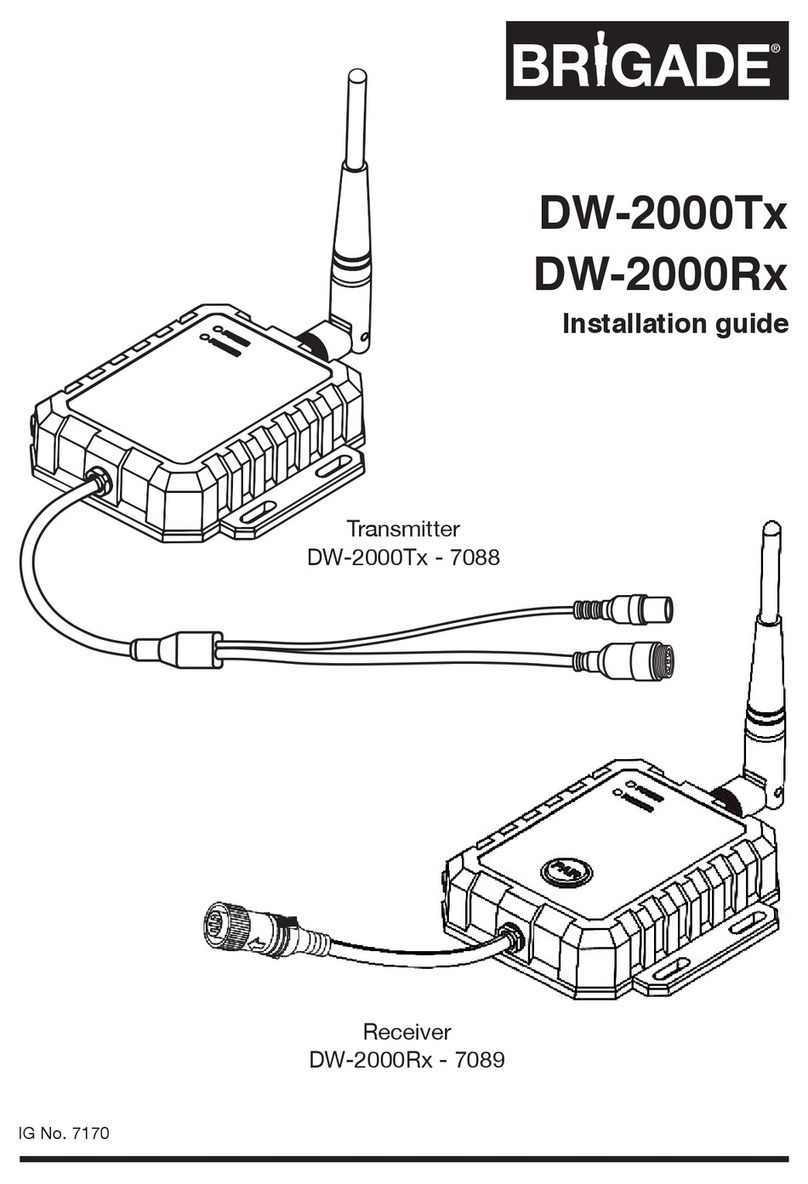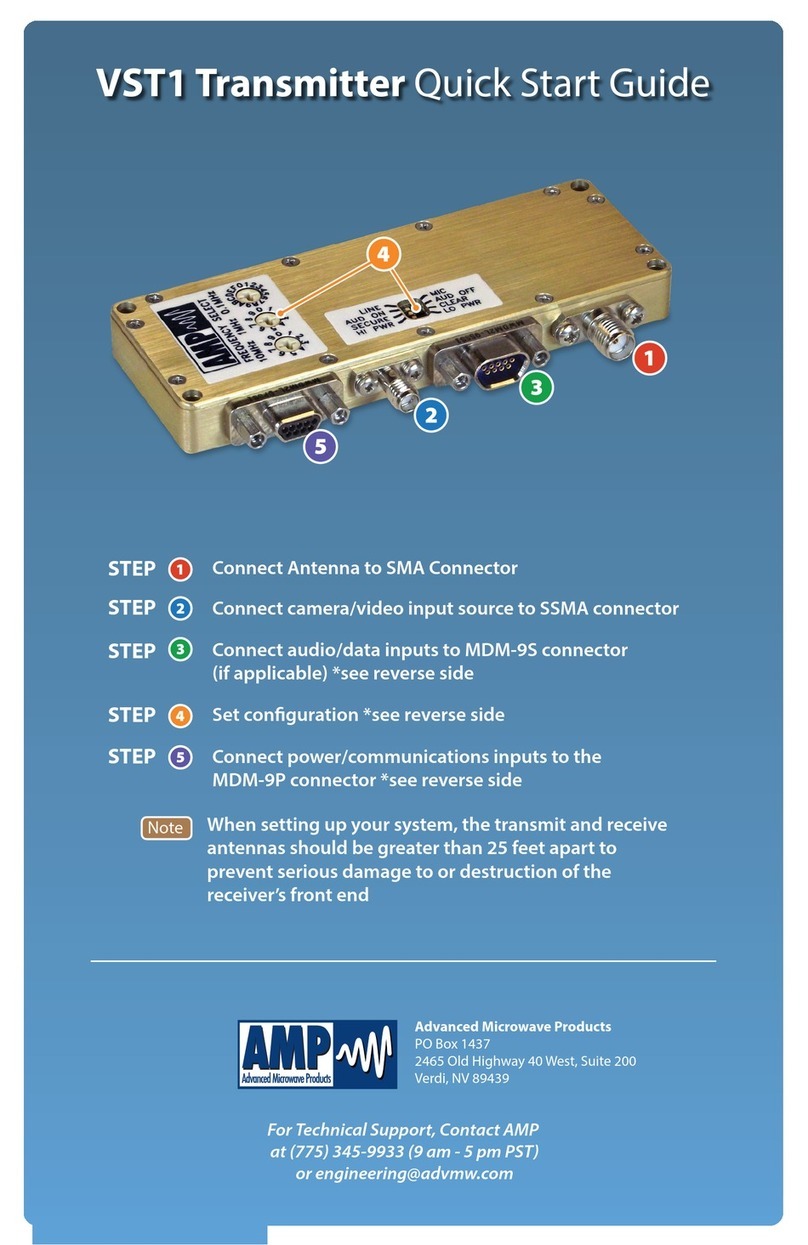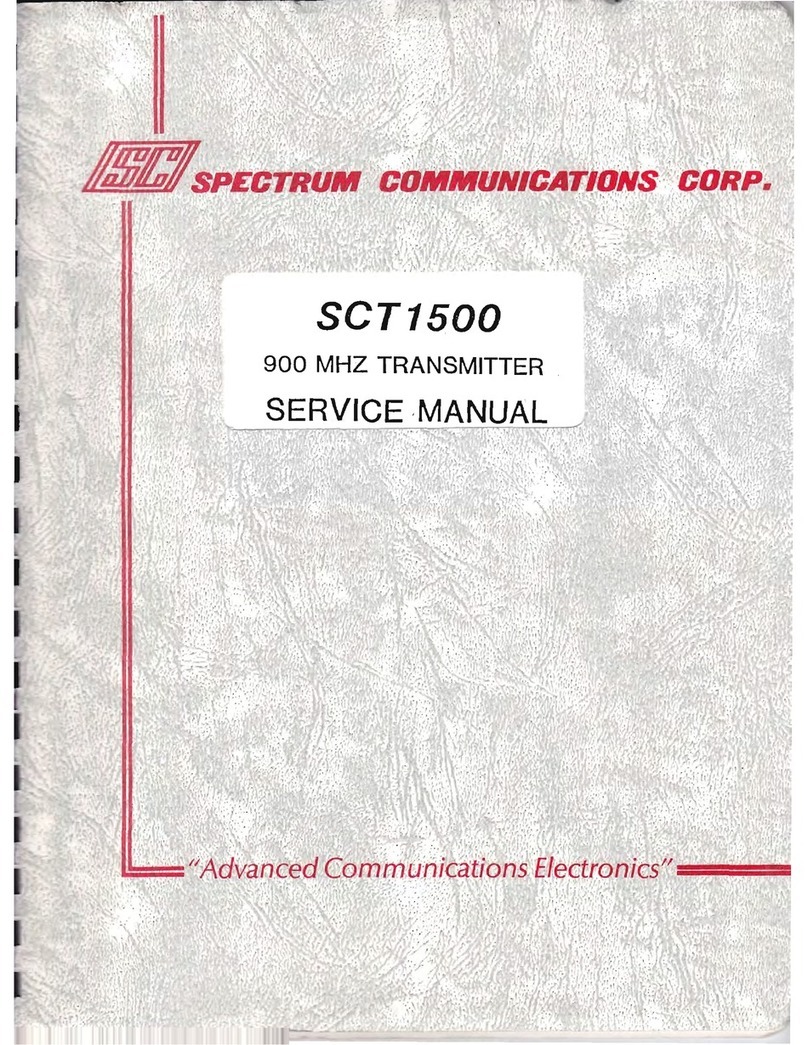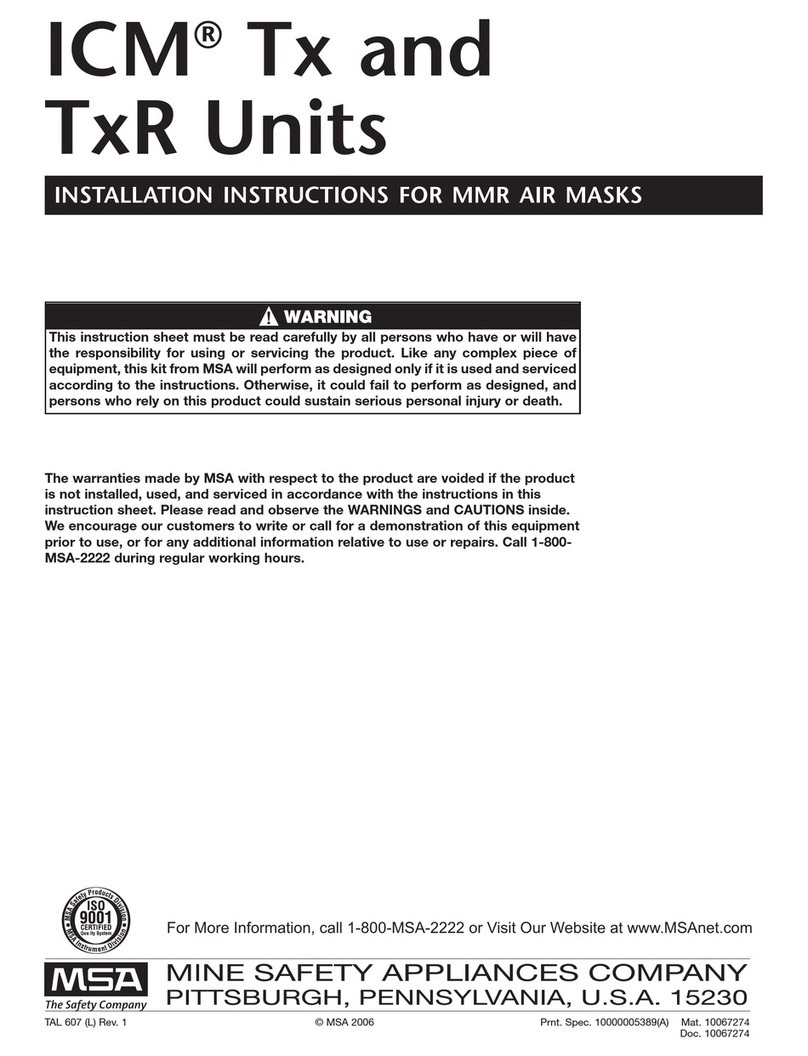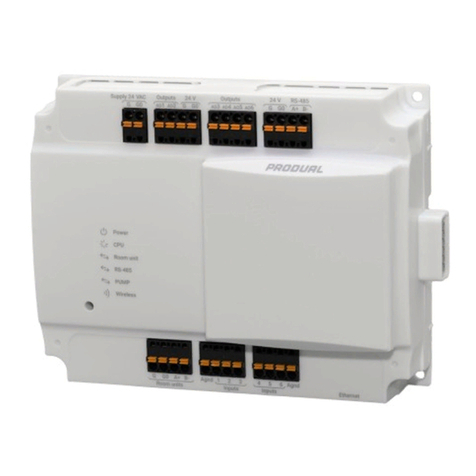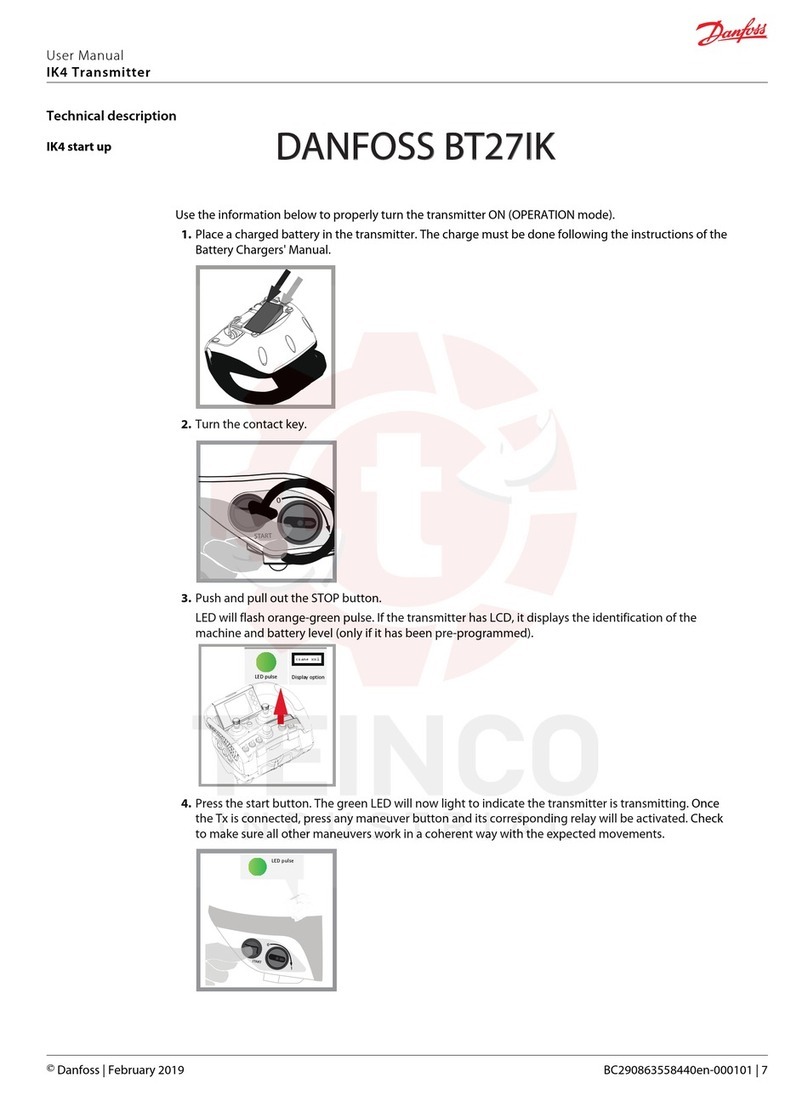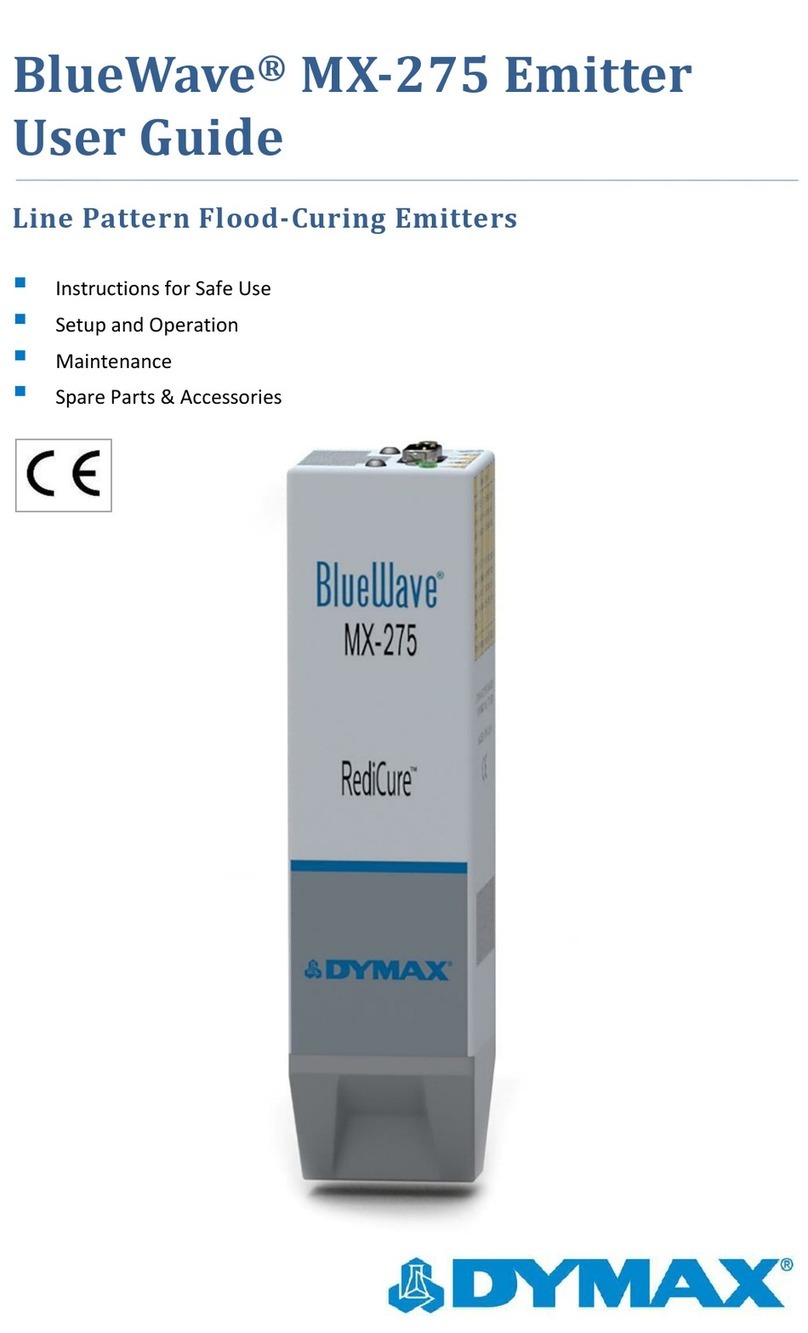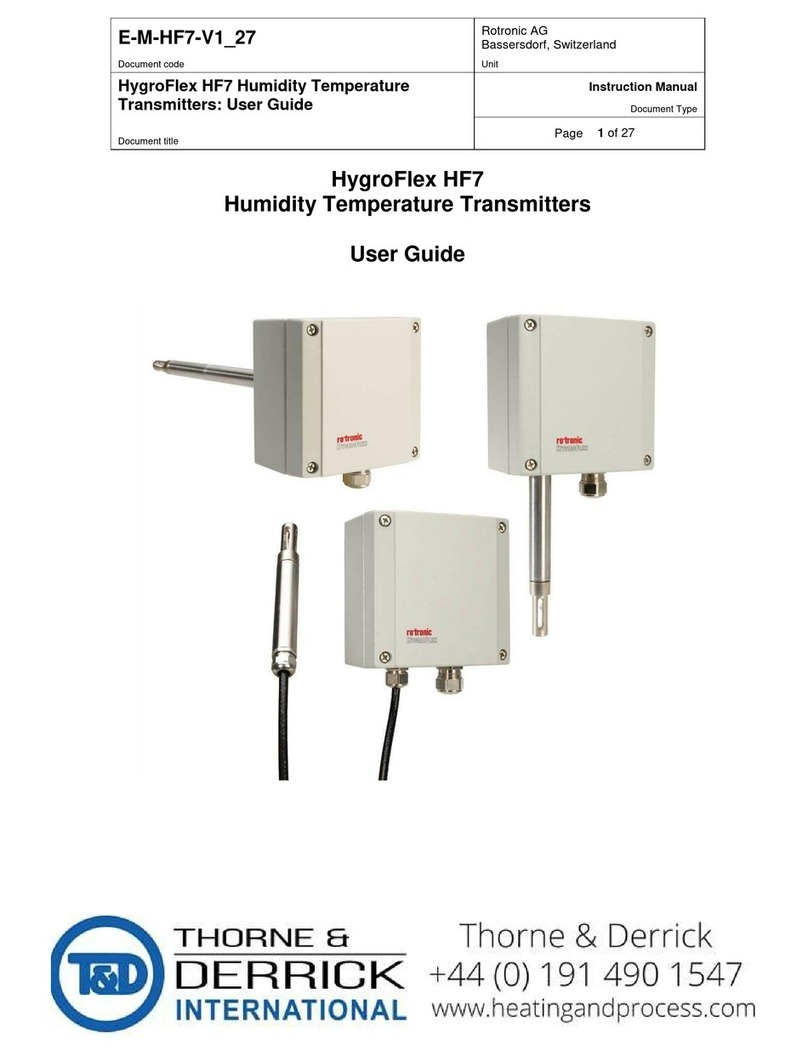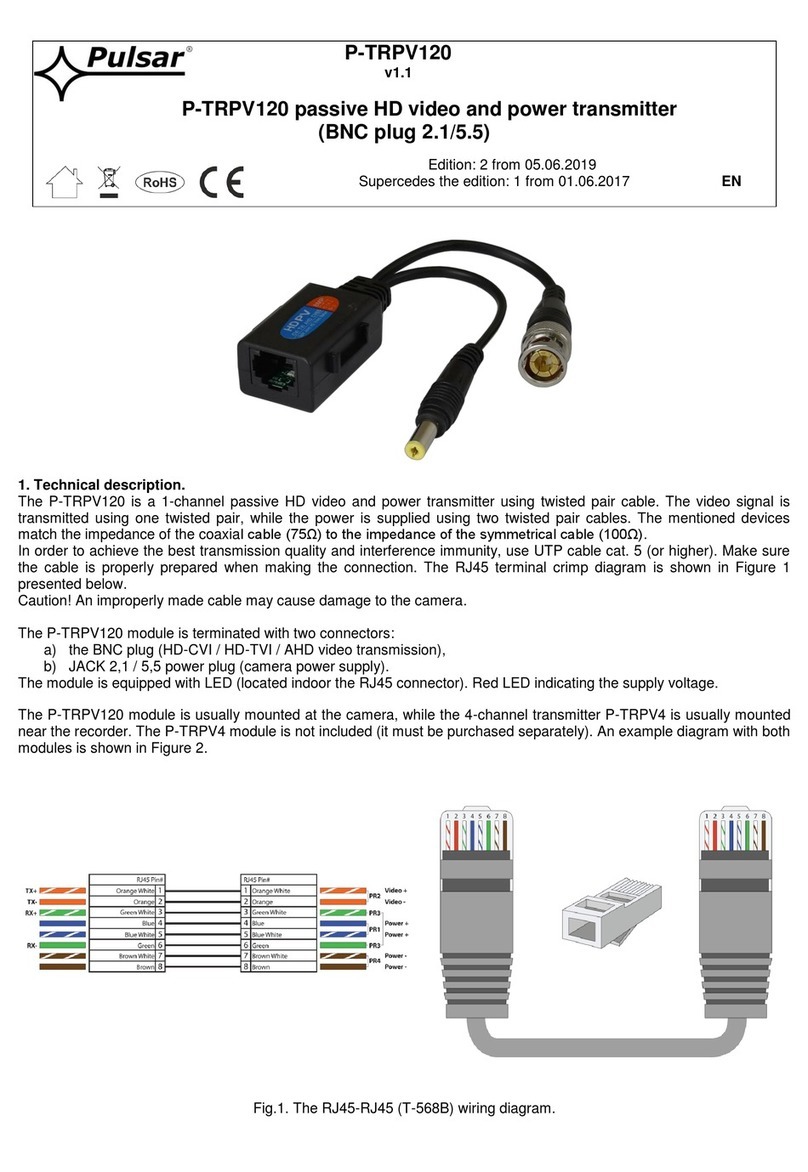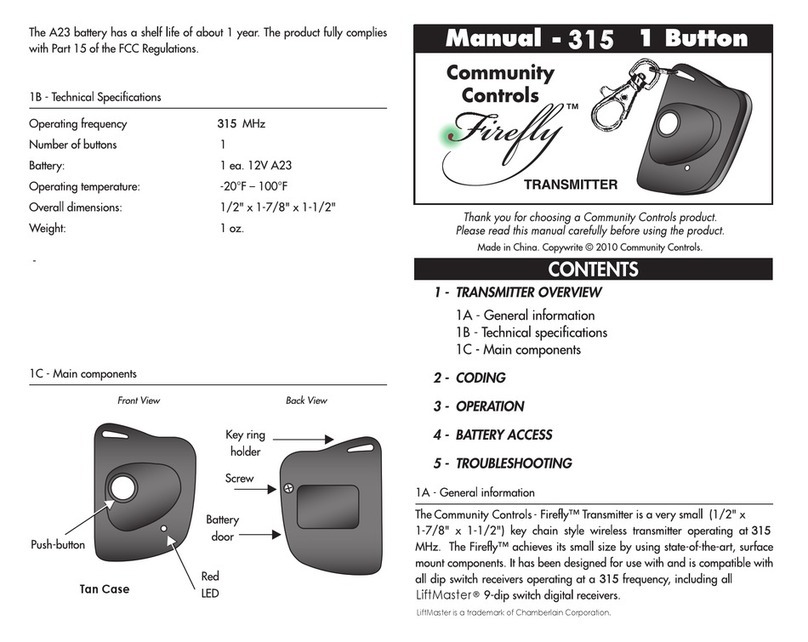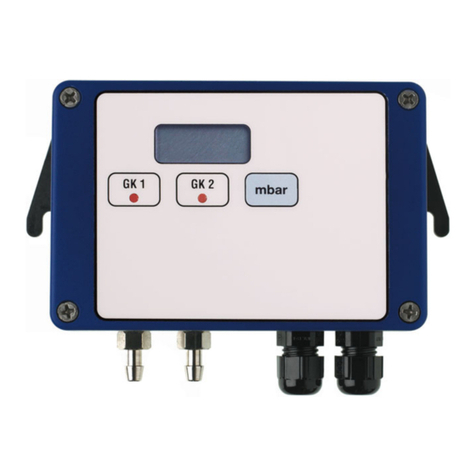Technalogix TXF Series User manual

Revision 2.5
FM TRANSMITTER
TXF Series 2000-5000W
OPERATION MANUAL

Contents
1. INTRODUCTION........................................................................................................................ 1
2. GENERAL SAFEGUARDS........................................................................................................ 2
2.1. SAFETY AND FIRST AID................................................................................................................................2
2.2. OPERATING SAFEGUARDS............................................................................................................................3
3. TERMS OF SALE...................................................................................................................... 4
4. WARRANTY.............................................................................................................................. 7
5. PRINCIPLE OF OPERATION.................................................................................................... 8
6. INSTALLATION......................................................................................................................... 9
6.1. UNPACKING AND INSPECTION.......................................................................................................................9
6.2. PANEL CONNECTIONS............................................................................................................................... 10
6.3. INITIAL HOOK UP...................................................................................................................................... 11
7. OPERATING PROCEDURE .................................................................................................... 12
8. CONTROL INTERFACE.......................................................................................................... 14
8.1. CONTROLS............................................................................................................................................... 14
8.2. RF INFO SCREEN ..................................................................................................................................... 15
8.3. FM INFO SCREEN..................................................................................................................................... 16
8.4. CURRENTS SCREEN.................................................................................................................................. 17
8.5. VERSION SCREEN..................................................................................................................................... 18
8.6. CONTACT SCREEN.................................................................................................................................... 19
8.7. FM SETTINGS........................................................................................................................................... 20
8.8. AUDIO LEVELS.......................................................................................................................................... 21
8.9. SCA LEVELS............................................................................................................................................ 21
8.10. UNITS ...................................................................................................................................................... 22
8.11. DATE &TIME............................................................................................................................................ 22
8.12. EVENT HISTORY ....................................................................................................................................... 23
8.13. EVENT RESET .......................................................................................................................................... 23
9. WEB INTERFACE ................................................................................................................... 24
9.1. REMOTE CONTROL (VIA DB25) ................................................................................................................. 34
9.2. RBDS AND RDS...................................................................................................................................... 35
10. MONITOR AND CONTROL SYSTEM...................................................................................... 36
10.1. CONTROL SYSTEM OVERVIEW................................................................................................................... 36
10.2. OVERALL CONTROL BLOCK DIAGRAM ........................................................ERROR!BOOKMARK NOT DEFINED.
10.3. MODULATOR BOARD BLOCK DIAGRAM....................................................... ERROR!BOOKMARK NOT DEFINED.
10.4. FM INTERFACE BOARD BLOCK DIAGRAM ................................................................................................... 37
11. HARDWARE COMPONENTS ................................................................................................. 38
11.1. FM AMPLIFIER PALLET.............................................................................................................................. 38
11.2. FILTER/COUPLER...................................................................................................................................... 38
11.3. SPLITTER ................................................................................................................................................. 39
11.4. COMBINER ............................................................................................................................................... 39
11.5. POWER SUPPLY ....................................................................................................................................... 39
12. FACILITY RECOMMENDATIONS........................................................................................... 42
12.1. BUILDING RECOMMENDATIONS.................................................................................................................. 42
12.2. ELECTRICAL SERVICE RECOMMENDATIONS................................................................................................ 42

12.3. ANTENNA AND TOWER RECOMMENDATIONS............................................................................................... 42
12.4. SHELTER SECURITY.................................................................................................................................. 43
12.5. HEATING AND COOLING REQUIREMENTS.................................................................................................... 44
13. MAINTENANCE....................................................................................................................... 45
14. TROUBLESHOOTING............................................................................................................. 46
No part of this manual may be re-produced in any form without prior written permission from
Technalogix Ltd. The information and specifications contained in this document is subject to change at
any time without notice.

1. Introduction
Please take a few minutes to read the manual and familiarize yourself with your new Technalogix FM
power amplifier or transmitter.
This user manual, the Final Inspection Report, and of course our equipment, should be everything you
need to get on the air with a superb audio signal. We understand that a capable and confident user will
get the most out of our product and we have made every attempt to educate readers of all technical
levels. If there is something that is not clear, or you require further information, please do not hesitate to
contact us and we’ll be glad to help out.
Technalogix Ltd.
#4, 8021 Edgar Industrial Place
Red Deer, Alberta, Canada
T4P 3R3
Phone: 403.347.5400
Fax: 403.347.7444
URL: www.technalogix.ca
Email: technical@technalogix.ca
sales@technalogix.ca
All information that is specific to your unit is contained within the Final Inspection Report included in the
shipped equipment container. This report summarizes performance specification and this manual
provides wiring hookup details and outlines specific components found in the system.
We truly appreciate that you have chosen us as your RF equipment supplier. Happy transmission!

2. General Safeguards
This section is written as a general guide for safe operation of the equipment and is intended for those
having previous knowledge and experience with these kinds of equipment. It is not intended to contain a
complete statement of all safety precautions, which should be observed by personnel using this or other
electronic equipment.
Documentation
Read, retain and follow these instructions before operating the equipment.
Environment
To reduce the risk of fire or electric shock, do not expose this equipment to rain or moisture. Refer all
servicing to qualified service personnel.
Servicing
Do not attempt to service this equipment yourself as opening or removing covers can result in personal
injury and will void the warranty. Refer all servicing to qualified service personnel.
2.1. Safety and First Aid
Personnel engaged in the installation, operation, maintenance, or servicing of this equipment are
exposed to the hazard of high voltage. It is imperative that all safety regulations and precautions are
consistently observed. Knowledge of first aid procedures is recommended. The following information is
presented as a reference only. The user should ensure that they are trained in proper first aid and the
necessary precautions, which may not be contained in this manual, are followed.
•At all times, avoid placing any part of the body in series between ground and circuit points,
whether power is on or off.
•Dangerous voltage may be present in equipment even though power is off. Do not open the
cabinet. Refer servicing to qualified service personnel.
•It is the duty of all personnel to be prepared to give adequate emergency first aid treatment and
thereby prevent avoidable loss of life.
•Respiratory paralysis can cause death by suffocation within seconds. It is imperative that the
approved methods of artificial respiration are initiated immediately and continue until the victim’s
breathing is normal.
•A muscular spasm of unconsciousness may render the victim unable to break free of the electric
power. If this is the case, turn the power off immediately. Do not touch the victim or you may share
the same predicament!
•If the power cannot be turned off immediately, very carefully loop a dry rope, article of clothing,
length of strong cloth or a rolled-up newspaper around the victim and pull the victim free of the

power source. Carefully avoid touching the victim or clothing. Call for medical help immediately.
2.2. Operating Safeguards
Load Impedance
Technalogix FM equipment functions with a 50-ohm load impedances. It is imperative you maintain 50-
ohm impedances throughout your system for your equipment to provide maximum power transfer to the
antenna and decreased reflected power heading back towards the amplifier pallets. Failure to provide a
50-ohm path throughout the system may result in damage to your equipment. Before anything is turned
on, ensure that there is a 50-ohm path from the output of each stage to the input of the next, all the way
to the antenna.
Operating Warnings
Our FM equipment is designed to reliably generate a specific RF output power level. Failing to adhere to
overdriven amplifier, high reflected power, and high temperature, and other warnings can decrease the
reliability of your system and may result in damage to the unit. If you need to transmit to a little larger
coverage, you are better off increasing antenna gain, and more importantly, antenna height above
average terrain. On FM broadcast frequencies, insufficient antenna height puts an upper limit on your
range, regardless of power levels, as the distance from your antenna to the radio horizon is limited.
The radiated power from the cabinet of this device is below the Industry Canada radio
frequency exposure limits. The device should be used in such a manner that the potential
for human contact with the antenna during normal operation is minimized.

3. Terms of Sale
Sales by Technalogix Ltd. (“Seller”) are made only on terms which are contained in this policy. Seller
hereby gives notice of its objection to any different/additional terms and conditions. All sales are expressly
conditional upon Buyers’ assent to the terms and conditions set forth below. These terms and conditions
may be modified/ supplemented only by written document signed by authorized representative of the
Seller. These terms and conditions supersede any prior and/or contemporaneous
agreements/correspondence between Buyer and Seller. Any order received and accepted by Seller shall
be construed as acceptance of Seller’s offer to sell its products to the Buyer in accordance with terms
and conditions of sale set forth herein. No waiver, whether express or implied, by Seller of any of the
terms or conditions hereof shall be deemed a continuing waiver or trade custom between parties, but
shall apply solely to the instance to which the waiver is directed.
Ordering Information
All orders must be in writing and/or accompanied by a Purchase Order. A minimum down payment is
required with all orders. No orders are considered an order until the payment has been made.
Pricing Policy
All prices are FOB shipping point and prices do not include freight, handling, and insurance. All prices
published/quoted by Seller may be changed at any time without notice. Unless otherwise specified,
written quotations expire 30 days from date issued and subject to change/termination by notice during
this period.
Taxes
Prices for all products do not include any sales, use, excise or other taxes. Buyer agrees to pay all
applicable taxes, duties and other fees on product and services ordered. If Buyer claims an exemption
from any tax, Buyer shall submit to Seller the appropriate exemption certificates.
Shipping
Shipping is the responsibility of the Buyer. This includes all freight, customs and brokerage charges,
duties, and insurance.
Terms of Payment
Seller will provide credit terms to Buyer at its discretion. Such terms are subject to change at all times. If
credit is provided, Seller will invoice Buyer on the date the product is ordered. Such invoices will be due
and payable net thirty (30) days from the date of invoice, subject to credit is not established or maintained,
terms shall be net cash on or prior to the Delivery Date. Seller reserves the right, at its sole discretion at
any time to revoke any credit previously extended. Past due accounts shall be charged two percent (2%)
per month, or the highest rate permitted by Alberta law, whichever is less, and will be added to the
outstanding balance. In the event Buyer defaults on the payment, Buyer shall be liable for all collection
costs, including reasonable attorney’s fees and costs. Non-payment of past due accounts will result in a
lien against parts and all subsequent assemblies or products that our components are in. Goods remain
the property of Seller until invoice is paid in full.

Changes and Cancellation
Purchase orders that have been accepted by Seller may not be changed/ cancelled, in whole or part,
without written Seller consent. All changes must be included in change order reflecting purchase order
and submitted to the Seller. All other changes will not be accepted/acknowledged. Changes may affect
delivery dates. Expenses incurred because of changes shall be charged to Buyer. Buyer will be liable for
Seller’s costs incurred, plus a reasonable profit, for the portion of work terminated, in accordance with
generally acceptedaccounting principles, together with cancellation charges.Ordersfor standard product
may be changed by Buyer, with no penalty to Buyer, provided that Buyer provides Seller notification at
least 30 daysprior to scheduled ship date. Order changes received within 30 days of scheduled ship date
may be subject to an order change charge; a schedule detailing these charges will be forwarded to Buyer
when Buyer’s change order is acknowledged. In no event can any aspect of the order be changed after
the product shipment has occurred. Custom orders may be cancelled by Buyer, provided that Buyer pays
Seller for completed work allocated to Buyer’s order at time of termination of the work at selling price and
all costs for work-in-progress and costs resulting from cancellation andreasonable profit therein. Specific
cancellation charges dependent on the type of custom product ordered. A schedule detailing these
charges will be forwarded to Buyer when Buyer’s cancellation fee of up to 100% of the order, depending
on the stage of completion of the order at the date the cancellation or revised is accepted.
Custom Products Policy
Custom items are not returnable. Items other than “off the shelf” products are considered custom and
are products/materials which have been altered, amended and customized to your order, and not
resalable.
Returns
Product return without written authorization by Seller will not be accepted. Returns accepted only with a
valid Return Material Authorization (RMA). To receive authorization for product return, call Seller. There
is a standard 25% restocking cost assessed on most returns. All returned products (non-repair) must be
unused, and in original condition. No refund/credit given for damaged products. We do not accept
postage-due/ C.O.D. packages at any time.
Excusable Delay
Seller shall not be liable for any loss or damage resulting from any delay in delivery or failure to deliver
which is due to any cause beyond Seller’s control, including, without limitation, acts of nature,
unavailability of supplies or sources of energy, riots, wars, fires, floods, epidemics, lockouts, strikes and
slowdowns, delays in delivery by supplies, or acts or omissions of the Buyer. The Buyer shall be liable
for stage charges, including but not limited to all third party costs and expenses incurred by Seller, in
holding or storing products for the Buyer or at the Buyer’s request.
Assignment
Buyer shall not assign any duties nor assign any order or any interest therein without written consent of
the Seller. Any such actual or attempted assignment shall entitle Seller to cancel the order upon written
notice to the Buyer.

Installation
Seller assumes no obligation to install any product sold to place any products in working order at Buyer’s
premises and not responsible for freight damage.
Validity of Separate Clauses
If any provisions of this agreement shall be held invalid, illegal, or unenforceable, the validity, legality or
enforceability of the remaining provisions shall not be affected or impaired thereby.

4. Warranty
Technalogix products have been completely tested and found to meet specifications and be in proper
operating condition. Technalogix-manufactured products are warranted to be free from defects in
materials and workmanship for a period of two years from the date of shipment. Products sold through,
but not directly manufactured by Technalogix, carry the original manufacturer’s warranty. Seller will not
be liable for damages of whatever nature arising out of or in connection with the equipment or its use
thereof. Technalogix does not assume responsibility for injury or damage resulting from the practices of
untrained or unqualified personnel in the handling of this equipment and does not include misuse, neglect
or accident, incorrect wiring and/or improper installation, unauthorized repairs, modifications or use in
violation of instructions issued by Seller, incidental or consequential damages as a result of any defect,
reshipment cost or insurance of the unit or replacement units or parts, acts of nature, damages due to
AC or DC power supplied by customer to power the equipment (see installation recommendation for
surge protection), or actsof terrorism. Seller agrees, atour option, to remedy warranted defects or furnish
a new part in exchange for any part of unit which, under normal installation, use and service, becomes
defective. The user pays for transportation costs to and from repair facility. If you require on-site service,
please contact our sales department for pricing and conditions.

5. Principle of Operation
The internal FM exciter found inside FM transmitter enclosures accepts analog, digital or MPX audio
signals and modulates them onto an FM carrier. The analog signal can be either mono or stereo (both
included as standard), while the digital inputs are accepted on AES3, S/PDIF optical (Toslink), or S/PDIF
coaxial inputs. Also included on the Interface circuit board are amplifier stages to increase the modulated
level from a few dBm up to approximately 1 Watt.
The RF power amplifier stages are designed to take a modulated FM carrier from the Exciter/Interface
board and amplify the carrier to the specified power level. The power amplifier feeds the antenna through
an inline wattmeter and transmission line. For broadcast and over-the-air amplifier systems, the pattern
of the antenna then dictates the range and coverage area.
The amplification isaccomplished by one or manyamplifier pallets internal to the power amplifier system.
If there is more than one amplifier pallet stage, then the first pallet acts as a driver feeding Intermediate
Power Amplifiers (IPAs) and/or final stage pallets. If multiple final pallets are required, then a splitter and
combiner are also required before and after the final stages.
Technalogix manufactures FM amplifiers and transmission systems suitable for 87.5 to 108.0 MHz.
Custom frequencies are available upon request if you require carriers outside this range, including audio
for VHF applications and other unique requirements.
The RF amplifiers utilize readily available RF components wherever possible, thus enhancing the
serviceability of the equipment. The amplifier modules are stable for high reliability and long service life
and feature ultra linear amplification and RF output filtering.
The Block Diagram is included in this manual to illustrate the specific component flow of the RF amplifier
system and to provide specific configuration and model information.

6. Installation
This section contains unpacking, inspection, and installation instructions for the transmitter. Please read
the following sections carefully prior to setting up the equipment.
6.1. Unpacking and Inspection
Check the outside of the container. Carefully open the container and remove the power amplifier or
transmitter and any accessories. Retain all packing material that can be reassembled in the event that
the equipment must be returned to the factory.
Exercise care in handling equipment during inspection to prevent damage due to rough
or careless handling.
Visually inspect the enclosure of the power amplifier or transmitter for damage that may have occurred
during shipment. Check for evidence of water damage, bent or warped chassis, loose screws or nuts, or
extraneous packing material in connectors or fan failures. Inspect all connectors for bent connector pins.
If the equipment is damaged, a claim should be filed with the carrier once the extent of the damage is
assessed. Technalogix cannot stress too strongly the importance of immediate careful inspection of the
equipment and subsequent immediate filing of the necessary claims against the carrier if necessary. If
possible, inspect the equipment in the presence of the delivery person. If the equipment is damaged, the
carrier is your first area of recourse. If the equipment is damaged and must be returned to the factory,
phone for a return authorization number. Claims for loss or damage may not be withheld from any
payment to Technalogix, nor may any payment due be withheld pending the outcome thereof.
Technalogix cannot guarantee the carrier’s performance.

6.2. Panel Connections
AC IN:
Single phase AC input to feed internal AC/DC switching power supplies. Check
with factory as not all power supplies are universal 110/220V.
RF OUT:
FM modulated RF carrier output (N female or 7-16 DIN female)
RBDS/RDS
(USB):
Configuration and control of RBDS/RDS encoder in transmitter accomplished
through USB (female) connector.
REMOTE PORT:
Parallel parameter interface (DB25 female)
ETHERNET:
Remote control and monitoring via Ethernet (RJ45 jack) –same connector as
SNMP.
SNMP:
Simple Network Management Protocol (SNMP) remote control and monitoring
(RJ45) –same connector as Ethernet.
S/PDIF COAX:
Digital audio input, Sony/Phillips Digital Interface, coaxial (RCA female)
S/PDIF OPTICAL:
Digital audio input, Sony/Phillips Digital Interface, optical (Toslink female)
AES (digital) /
RIGHT (analog):
Digital audio input, AES/EBU professional audio interface (XLR female) /
Analog audio input, right channel, (XLR female). For Mono operation, use the
Right input.
LEFT (analog):
Analog audio input, left channel, (XLR female)
MPX IN:
External MPX input. Used when external stereo encoders or processors present.
(BNC female)
MPX OUT:
MPX output signal from exciter. Used for external processing. (BNC female)
SCA1/SCA2:
Input connection from SCA generator or source, intended for 60 to 99 kHz.
Typically modulated to 10%, or 7.5 kHz deviation.

6.3. Initial Hook Up
1. Ensure that the antenna has been swept and, ideally, has a return loss of greater than 20dB
(VSWR = 1.2:1). This should be done before connecting the antenna cable to the system’s output.
The power amplifier’s control system allows the user to change the VSWR trip point up to a
maximum level of 1.8:1, unless a custom VSWR protection system has been requested. Strive
for the lowest possible return loss to maximize transmission distance and improve operating
performance. Unless requested otherwise at the time of purchase, VSWR levels between the trip
point set by the user and 1.8:1 (or custom VSWR trip point) will cause afold back in power. VSWR
levels past 1.8:1 (or custom VSWR trip point) will cause the system to shut down or fold back with
attenuation to avoid damage.
2. Place the amplifier in its permanent location near a receptacle supplying the required AC or DC
mains voltage.
3. Place an appropriate AC or DC power line protector, conditioner, and/or surge suppressor across
the supplyline. This small investment ishighly recommendedto protect theequipment frompower
surges and spikes (not covered by warranty).
4. Install a lightning surge arrestor or Gas Discharge Tube (GDT) on the coax near the antenna to
protect the amplifier. This small investment is highly recommended to protect the equipment from
lightning (not covered by warranty).
5. Connect the transmitting antenna cable to the RF OUT female connector on the PA enclosure’s
RF output. On units that have a separate filter or filter/power supply enclosure after the power
amplifier enclosure, ensure to connect the transmitting antenna cable on the last enclosure in the
chain to the RF Out and connect the RF coaxial between the power amplifier and the second
enclosure in the chain. The system must be loaded into a 50-ohm load before any power is turned
on for over-the-air systems. The Wiring Hookup is included in the shipping package and visually
summarizes the aforementioned information.
6. Connect the desired audio source connection, analog mono or stereo, digital audio, or
MPX. Subcarrier signals can be connected to the SCA1 or SCA2 BNC connectors.
7. Connect additional control/monitoring cables if desired. SNMP or Ethernet should be connected
to the lower RJ45 on the back panel. Remote port connections are made to the DB25 connector
and the internal RDS in controlled by RS232 on the DB9 connector.
At this stage, the system is set up and ready to do a preliminary start up, as outlined in the “Operating
Procedure” section.

7. Operating Procedure
Assuming the previous installation instructions have been completed and cautions noted, and the power
amplifier is ready to receive a properly modulated RF signal, proceed with the following steps to place
the system in operation. The power amplifier has been factory aligned fora specific frequency(per system
specification), signal levels and optimum performance.
IT IS HIGHLY RECOMMENDED THAT YOU RUN YOUR SYSTEM INTO A DUMMY
LOAD BEFORE INSTALLING TO MAKE SURE THERE ARE NO DAMAGES CAUSED
IN SHIPPING AND THE UNIT IS RUNNING PROPERLY
1. Verify that all control and RF cables are tight and properly seated in or on the mating connector.
2. Plug in the desired audio source: analog (left and right for stereo), digital or MPX. For mono audio
use the Right XLR input.
3. With the power amplifier loaded into the antenna, cavity, alternative load, or dummy load power
up the amplifier by turning on power supply either via theON/OFF switch on the backof the power
amplifier.
4. Verify that the power amplifier fans are all on. The power amplifier fans are powered via DC
voltage so this is an indication that the power supply is started and running. There may be fans
installed in the filter or power supply enclosures, if applicable.
5. The internal soft start circuitry will turn the bias voltages off until the power supply to the amplifier
pallets is fully stable. The front display indicates when the soft start is running with either a
displayed message when an LCD option is installed or via maximum attenuation when a touch
screen option is installed. Once complete, the Forward and Reflected Power, Power Supply, and
Temperature readings will appear on the display. Deviation is shown on the FM screen.
6. Adjust RF output power on the power amplifier to about 10% of rated forward power. The output
power level is adjusted from the power amplifier’s RF Levels screen. Turn the carrier on. If the
unit contains more than one final amplifier pallet (illustrated in Error! Reference source not
found. Error! Reference source not found.), ensure that the final pallet currents on the multiple
finals all match within 10% of each other. With multiple finals, the final pallet currents should
always match within this range under all operating conditions.
Front panel readings will vary slightly upon turn on. Steady state parameters can be
taken after approximately one hour.
7. Ideally, the RFL Power should read zero. However, should a high VSWR be detected, the system
will automatically fold back. Under normal conditions, a well installed and setup system should
indicate RFL power less than 3% of FWD power.
8. Adjust RF output power on the power amplifier to desired level. The output power level can be
adjusted from the power amplifier’s RF Levels screen. Keep in mind that the system will fold back
or shut down (depending on severity) should the forward RF output power level exceed the trip
overdrive point.

Pease note that 100% should be the maximum FWD power. Typically, customers run
the systems at 90% to avoid occasional AC power line spikes or transients from tripping
the shutdowns. The difference of 10% will provide a marginal difference in range (tower
height will have a much more significant effect on range in the case of over-the-air) or
cavity excitation.
9. Verify that thepower supply reads correctly(see supplied final inspection sheet for factory settings
of power supply levels) on the display of the power amplifier. You should see no more than 3%
fluctuations in DC supply voltage, and even less with a properly conditioned AC source to the
power supply.
10. Look at the transmitted output using suitable test equipment. If the output quality is unsatisfactory,
check the input signals, connections to the antenna system, antenna and transmission line
VSWR, and the physical condition of the antenna.
11. Select the appropriate input from the FM Controls screen on the front panel.
12. Adjust the attenuation for the input if needed from the Audio Levels screen on the front
panel. Check the modulation level on the main RF Display or FM display on the front panel.
13. After warm up, compare the temperature of the equipment from the front display to the
temperature recorded in the final inspection sheet, included in shipping. Assuming ambient
temperatures are close (our factory is typically around 18 to 25˚C), your temperature reading
should be very close to the factory reading. Use your temperature measurement as a method to
monitor fan performance (though on higher power units, fan current is also monitored). A fan
failure or air blockage will show an increase in temperature, assuming ambient temperature is not
varying.
For FM broadcast applications, if the quality of transmission is unsatisfactory, the difficulty is often with
the receiving antenna or with obstructions in the path between the amplifier/antenna and receiver. There
is also a troubleshooting section located later in this manual.
At this time, Technalogix recommends that you document your measurements to use as a reference over
time. The measurements can be made either from the front display, or remotely via the Remote Port
(DB25), Ethernet (lower RJ45), or SNMP (lower RJ45), whose operation is explained in the Monitor and
Control System sections.

8. Control Interface
8.1. Controls
Carrier On/Off
Back/Cancel
Next/Enter
The four control button are located directly below the display screen as shown above. Control options
for various screens are shown below.
Back/Cancel :
Changes screen to previous tree or cancels a setting change without
changing the setting
or
Changes between screens or settings
Next/Enter
Changes screens; Selects settings to change and saves a changed setting
Carrier Switch:
From any screen, the FM transmitter carrier can be turned on or off. To toggle
carrier status, simultaneously touch the Back and Next buttons. Carrier
status is shown in the bottom right corner of the display
Symbol present indicates carrier is on
The same result occurs by turning on or off the system via the web or SNMP
interface, or through controlling of the Remote Port. The power supplies will
remain active while the carrier is turned off. The fans will power down after 1
minute
Carrier Lock:
If the PLL has locked onto the carrier frequency LOCK will be displayed.
While the is no lock the unit will stay at minimum output power level.
Error Message
In the event of a fault condition the unit will try to fold back to a safe level,
sound an audible alarm and display the event on the screen. This message
will replace the Technalogix logo.
Possible messages are OVERDRIVE, HIGH VSWR and HIGH TEMP

8.2. RF Info Screen
The RF Info Screen summarizes key parameters for the RF carrier of the FM signal, as illustrated in the
sample screen below:
DEVIATION
The maximum frequency deviation from the carrier centre frequency is
illustrated on this level bar. Typical maximum deviation, required byIndustry
Canada or FCC, is 75 kHz to avoid bleeding into adjacent channels. 100%
represents a full 75 kHz deviation.
FORWARD POWER:
This is the power out of the transmitter to the antenna or load, measured in
watts or scaled percentage, depending on how the units are set in the
Settings Screen.
REFLECTED POWER:
This is the power coming back into the transmitter from the antenna or load,
measured in watts or scaled percentage, depending on how the units are
set in the Settings Screen. As there is no internal circulator or isolator
installed within the enclosure, it is important to minimize VSWR with a good
quality antenna installed using proper broadcast techniques. Ice build-up on
the antenna and damages to 50 ohm transmission line can also generate
damaging reflected power.
TEMPERATURE:
The temperature is measured on topof the heatsink near thefinaltransistors
and displayed here. User can toggle between Celsius and Fahrenheit from
the Settings Screen. In the event that this temperature exceeds the factory
set trip point, the RF carrier level will fold back to protect the unit. Common
causes for high temperatures can include failed internal fans or air
conditioning in the broadcast facility or a blocked fan.
Controls from RF Info Screen
or
Changes between screens or settings
Next
Goes to Currents screen

8.3. FM Info Screen
The FM Info Screen summarizes key parameters for the audio that resides on the RF carrier of the FM
signal, as illustrated in the sample screen below:
DEVIATION:
The maximum frequency deviation from the carrier centre frequency is
illustrated on this level bar. Typical maximum deviation, required byIndustry
Canada or FCC, is 75 kHz to avoid bleeding into adjacent channels. 100%
represents a full 75 kHz deviation
RIGHT LEVEL:
Right level bar represents the audio level on the right audio input channel.
LEFT LEVEL:
Left level bar represents the audio evel on the left audio input channel.
TEMPERATURE:
The temperature is measured on topof the heatsink near thefinaltransistors
and displayed here. User can toggle between Celsius and Fahrenheit from
the Settings Screen. In the event that this temperature exceeds the factory
set trip point, the RF carrier level will fold back to protect the unit. Common
causes for high temperatures can include failed internal fans or air
conditioning in the broadcast facility or a blocked fan.
Controls from FM Info Screen
or
Goes to RF Info screen
Next
Goes to Currents screen

8.4. Currents Screen
This screen allows the user to view voltage and current readings. A sample Power Supplies Screen is
displayed below:
Currents shown are total current or spIit current and the cooling fan current. Split current can be for
multiple amplifier pallets or multiple devices on one pallet. In the case of multiple pallets in the chain,
typically the user should see matching of the final pallets to within approximately 10%. Anything outside
this range is usually a sign that there may be an issue. Our team would be glad to walk you through any
troubleshooting issues or questions you may have.
DC supply voltages are nominally 24 or 48Vdc depending on the system.
Controls from Currents Screen
Goes to Versions Info screen
Next
Goes to FM Settings screen
Back
Goes to RF Info screen
This manual suits for next models
5
Table of contents
Other Technalogix Transmitter manuals
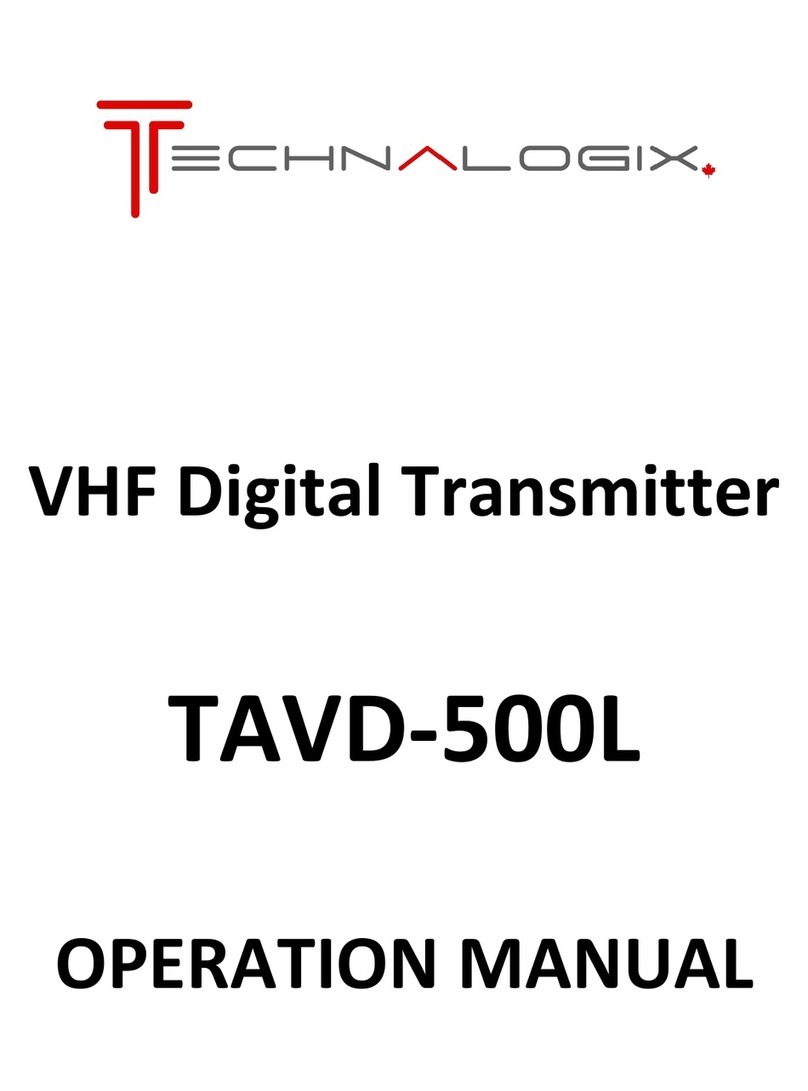
Technalogix
Technalogix TAVD-500L User manual

Technalogix
Technalogix TAUD-250 User manual
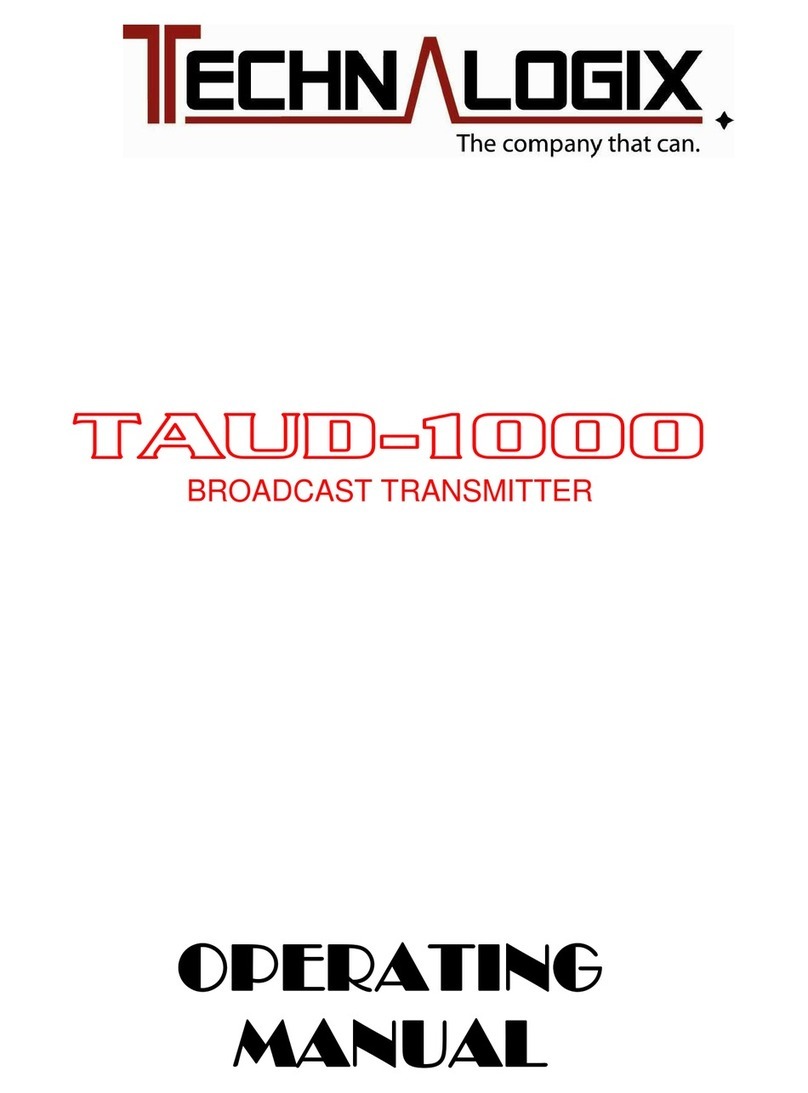
Technalogix
Technalogix TAUD-100 User manual
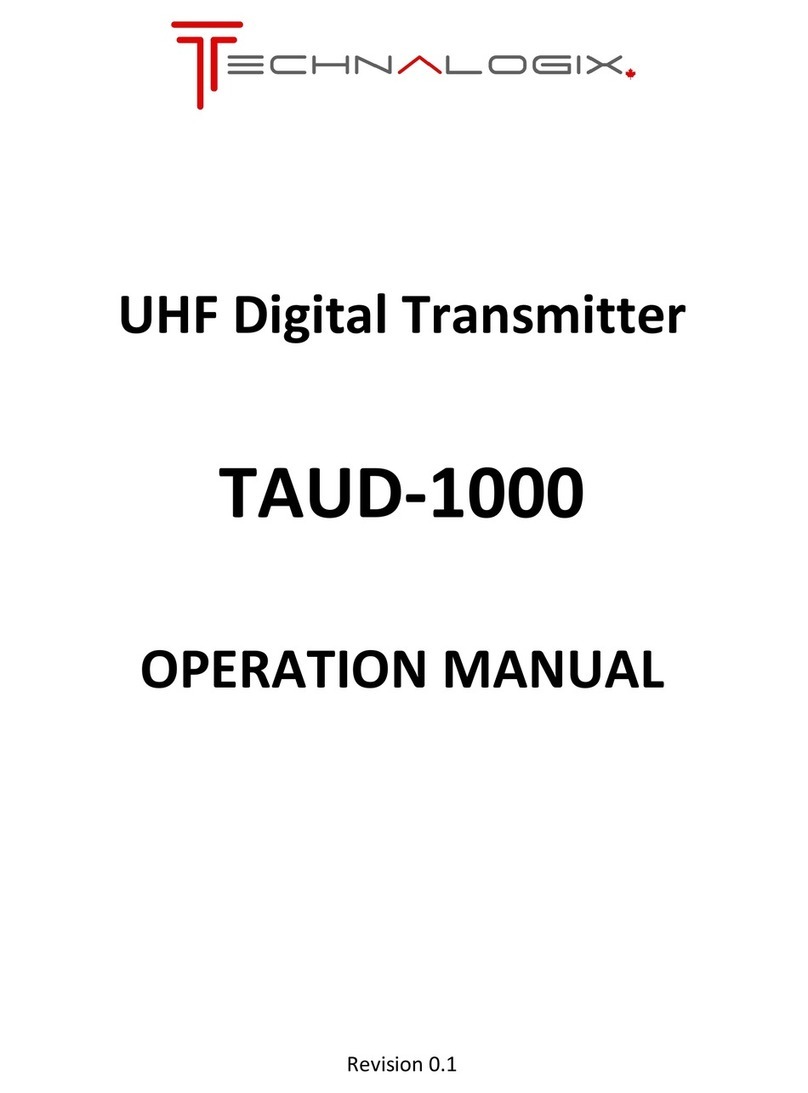
Technalogix
Technalogix TAUD-1000 User manual
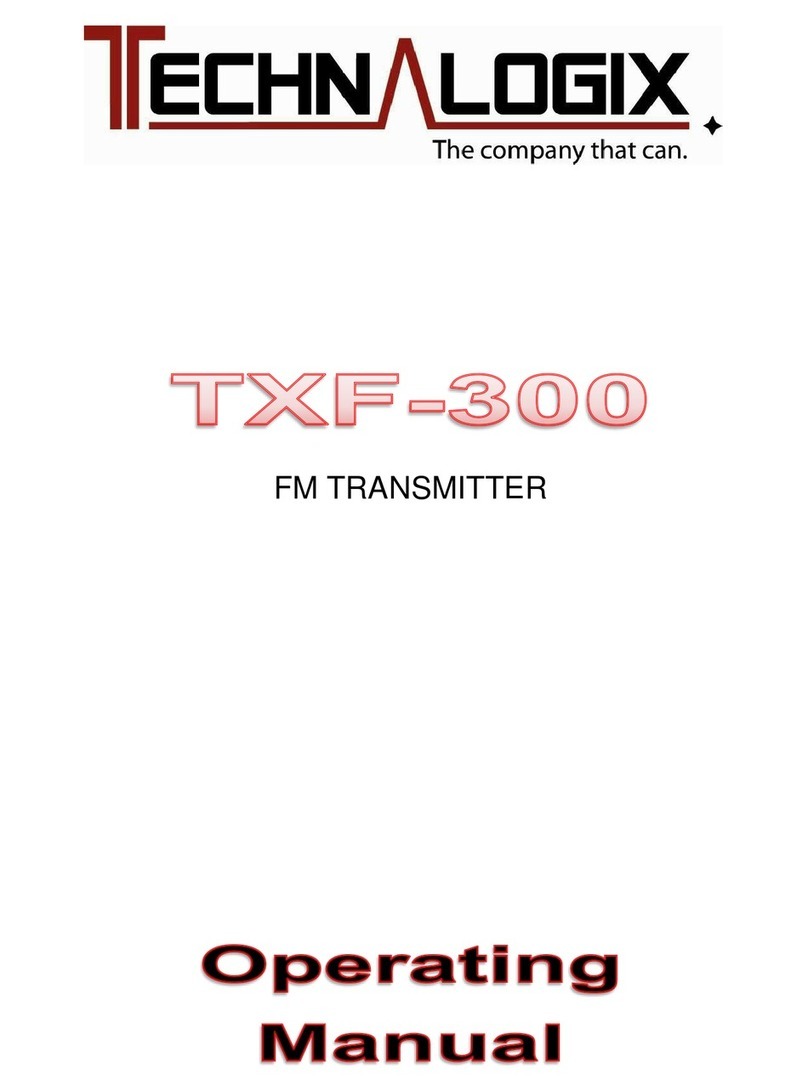
Technalogix
Technalogix TXF-300 User manual
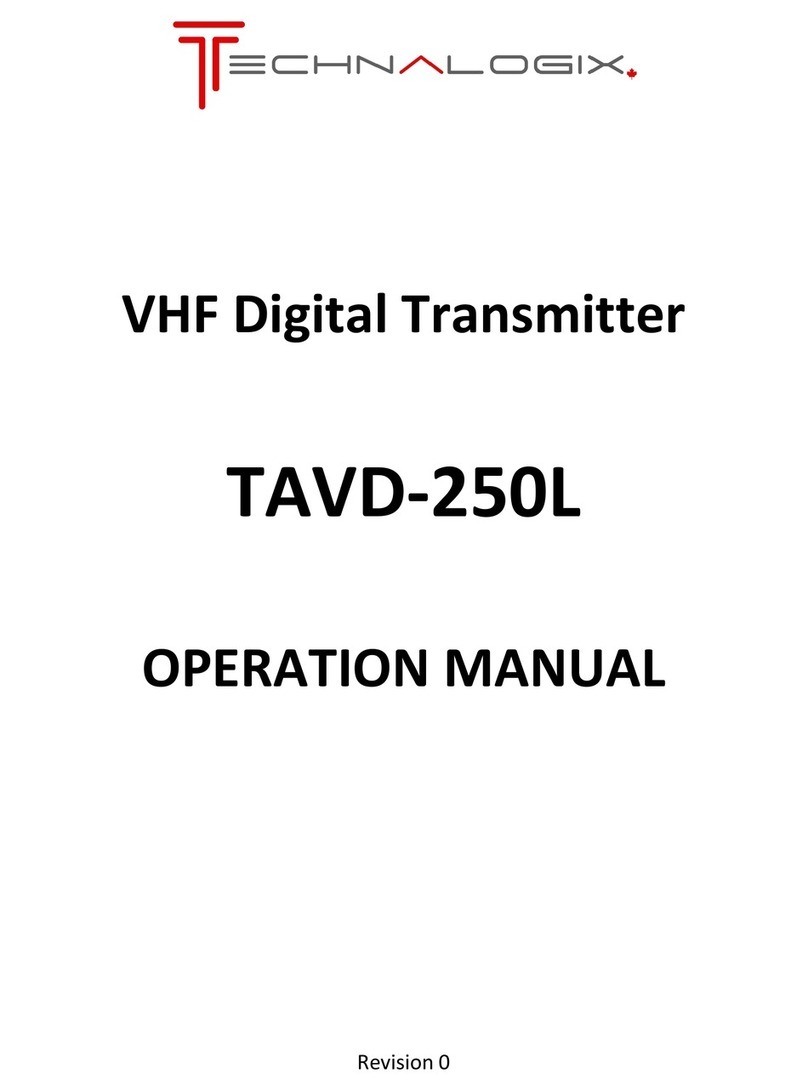
Technalogix
Technalogix TAVD-250L User manual

Technalogix
Technalogix TXF-1000 User manual

Technalogix
Technalogix TXF-500 User manual
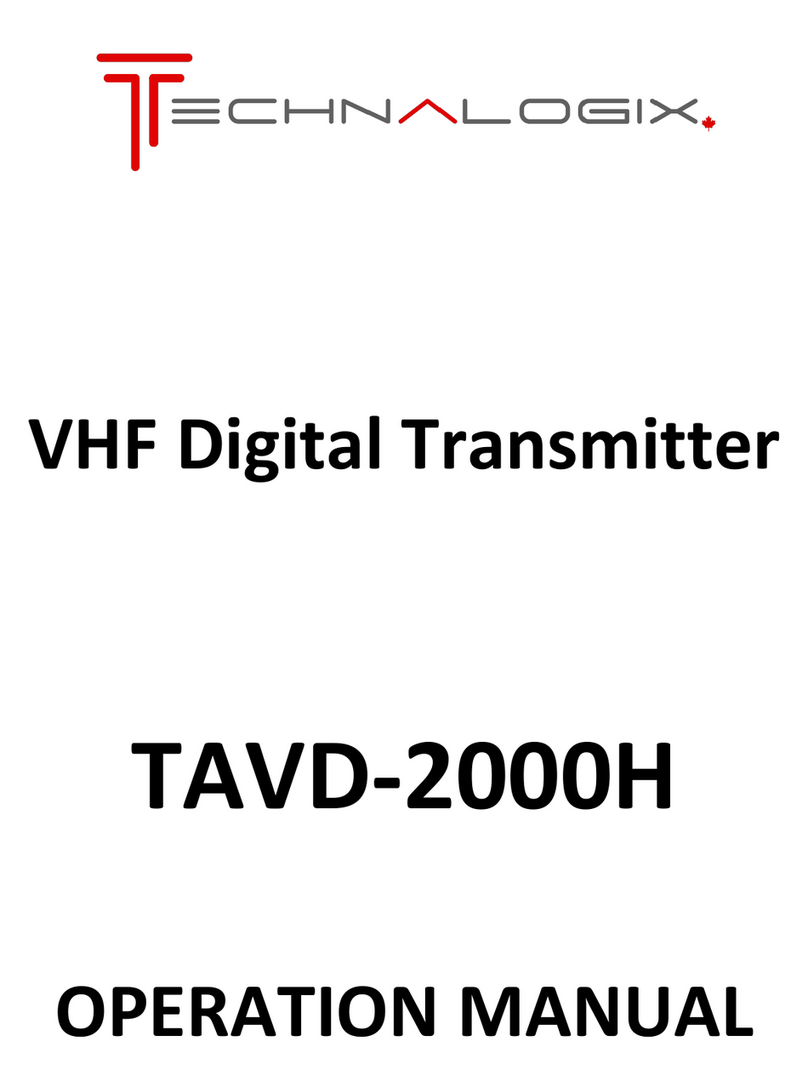
Technalogix
Technalogix TAVD-2000H User manual
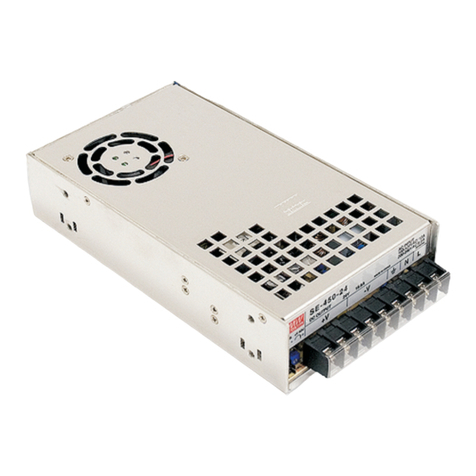
Technalogix
Technalogix TXF-150 User manual
